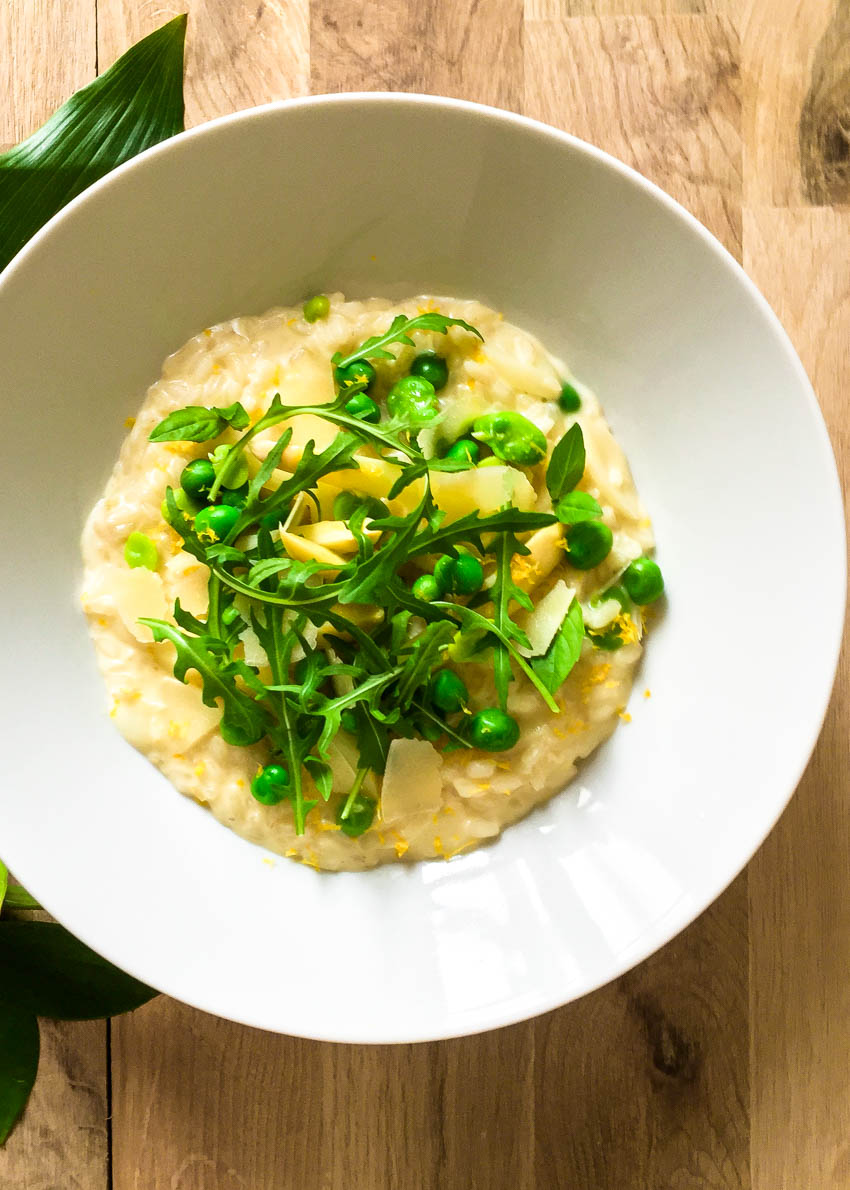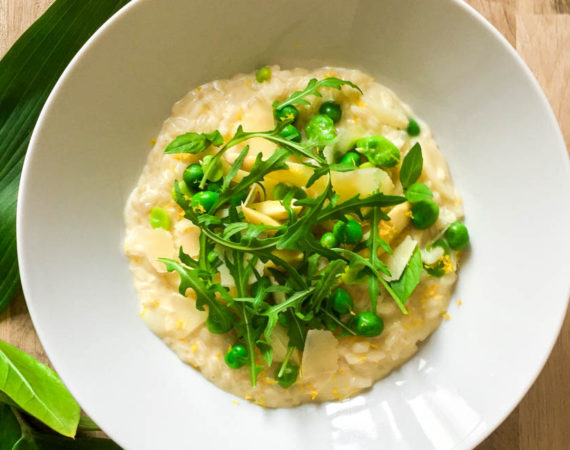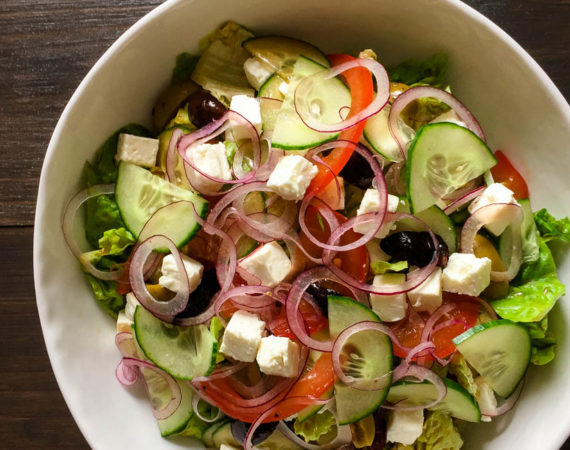Perfectly cooked risotto rewards you with a creamy yet al-dente texture that is packed full of flavor. Unfortunately, there are many mistakes that I see home cooks and chefs making while cooking risotto. Follow this delicious recipe to avoid those common mistakes and to make the creamiest risotto.
This incredible vegetarian risotto is my favorite by far, and it shows off the full flavor of a Spring risotto with fresh asparagus, peas, and fava beans. For the perfect risotto, slowly cook your rice over medium heat and pour in the basil infused vegetable broth step-by-step. Two of the most common misconceptions about risotto is that you have to stir it continuously and that it takes a long time to cook. The problem arises because most people don’t add enough stock at the beginning which leads to longer cooking times and a tired arm to avoid it burning. To avoid this, simply add just enough stock to cover the rice and gently stir. Then let your rice cook and stir as needed until you add the stock again. Add mascarpone and parmesan at the end for an even creamier risotto and fresh lemon zest on top to finish off the dish.

3 SERVINGS 40 MINS NOT TOO TRICKY SAUVIGNON BLANC
INGREDIENTS
Vegetable Stock & Garnish
1 L vegetable stock
1/2 large onion
2 medium carrots, optional
1/2 medium zucchini, optional
1/2 medium lemon
3 stalks basil
6 medium white asparagus
45 g fava beans
45 g peas
1 pinch of salt (to taste)
few leaves of roquette
Lemon Risotto
210 g arborio rice
1/2 large onion
100 ml white wine
50 g mascarpone
30 g Parmesan cheese
30 ml lemon juice
salt to taste
METHOD
Vegetable Stock & Garnish
- Peel the onion and cut it in half. Cut one-half of the onion into 4 segments and finely dice the other half for the risotto. Set aside.
- Bring the vegetable stock to a simmer. If you have some left over zucchini, onions or carrots, you can chop the vegetables and add them to the pot to enhance the stock.
- Slice the lemon in half and cut the other half of the lemon into large sections. Once the stock is simmering, add the basil and the sections of lemon to the pot. Immediately turn off the heat and let the ingredients infuse.
- In the meantime, bring another pot of salted water to a boil.
- Remove the scales of the asparagus. Then peel the asparagus and remove the bottom.
- Blanch the asparagus for 1 minute. Keep the water used to cook the asparagus to blanch the other vegetables. Remove the asparagus from the water with a spatula and immediately cool down in ice water. When the asparagus is cold, dry on a paper towel. Then place the asparagus in a container and reserve in the refrigerator.
- Blanch the peas for 30 seconds and then immediately cool down in ice water. Then remove the peas from the water and add them to a container.
- Repeat for the fava beans. Then, remove the skin of the fava beans and place in the same container of the peas. Reserve in the refrigerator.
Lemon Risotto and Finishing
- Strain the vegetable stock into a sieve over another pot. Set aside.
- Heat a large pot with olive oil on medium heat and sweat the remaining diced onion.
- Add the rice and stir for 1 minute until the rice is translucent.
- Add the white wine and reduce a bit approx. 1 minute.
- Continue to simmer the rice and add enough vegetable stock to just cover the rice evenly and stir. You do not need to continuously stir but keep an eye on it. Once the rice absorbs all the liquid, add the same amount of vegetable stock.
- Add to continue this operation for approx. 15 to 20 minutes to thoroughly cook the rice. When you add the stock after the third time, add only enough as needed. Also, be careful not to boil the rice, or it will be overcooked and hard in the middle. If you cook on heat that is too low, the rice will be like a pudding. Simmering is the perfect temperature, gentle but not too high.
- In the meantime, grate the parmesan as needed.
Slice the asparagus and add to the peas and fava beans. - When the risotto is almost finished about 3 minutes before, add the vegetables to the risotto.
- The risotto is cooked when it is al-dente. Once it is finished cooking, add the mascarpone, the parmesan and a nice squeeze of the other half of the lemon. Season with salt and pepper to taste.
- Place the risotto on a plate and add few leaves of roquette, a drizzle of olive oil and the zest of lemon on the top plate. Bon appétit!
NOTE
- Add enough stock to the rice to make sure it’s fully covered. If it’s not covered, your rice will burn. This is why there is the misconception that you need to continually stir because most people don’t add enough stock. But if you have enough stock, it will be creamy with less work. Make sure you keep an eye on it and stir when needed.










